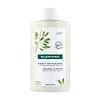What's inside
What's inside
 Key Ingredients
Key Ingredients

 Benefits
Benefits

 Concerns
Concerns

 Ingredients Side-by-side
Ingredients Side-by-side

Water
Skin ConditioningDecyl Glucoside
CleansingSodium Cocoyl Isethionate
CleansingDisodium Laureth Sulfosuccinate
CleansingGlycerin
HumectantDisodium Cocoamphodiacetate
CleansingAcrylates Copolymer
Avena Sativa Leaf/Stem Extract
Skin ConditioningCaprylyl Glycol
EmollientCeteareth-60 Myristyl Glycol
EmulsifyingCitric Acid
BufferingCoco-Glucoside
CleansingCoconut Acid
CleansingParfum
MaskingGlyceryl Oleate
EmollientGlycol Stearate
EmollientHydrogenated Vegetable Glycerides Citrate
EmollientLaureth-3
EmulsifyingMaleic Acid
BufferingPolyquaternium-22
Sodium Benzoate
MaskingSodium Chloride
MaskingSodium Hydroxide
BufferingTocopherol
AntioxidantTrisodium Ethylenediamine Disuccinate
Water, Decyl Glucoside, Sodium Cocoyl Isethionate, Disodium Laureth Sulfosuccinate, Glycerin, Disodium Cocoamphodiacetate, Acrylates Copolymer, Avena Sativa Leaf/Stem Extract, Caprylyl Glycol, Ceteareth-60 Myristyl Glycol, Citric Acid, Coco-Glucoside, Coconut Acid, Parfum, Glyceryl Oleate, Glycol Stearate, Hydrogenated Vegetable Glycerides Citrate, Laureth-3, Maleic Acid, Polyquaternium-22, Sodium Benzoate, Sodium Chloride, Sodium Hydroxide, Tocopherol, Trisodium Ethylenediamine Disuccinate
Water
Skin ConditioningMangifera Indica Fruit Extract
Skin ConditioningPassiflora Incarnata Fruit Extract
Skin ConditioningCamellia Sinensis Leaf Extract
AntimicrobialSodium Cocoyl Isethionate
CleansingCoco-Betaine
CleansingSodium Methyl Cocoyl Taurate
CleansingSodium Cocoyl Glutamate
CleansingDisodium Cocoyl Glutamate
CleansingSodium Chloride
MaskingGlycerin
HumectantOenocarpus Bataua Seed Oil
EmollientPlukenetia Volubilis Seed Oil
EmollientSucrose
HumectantCocoyl Hydrolyzed Quinoa Protein
Mauritia Flexuosa Fruit Oil
Skin ConditioningKaolin
AbrasiveAroma
Cymbopogon Nardus Oil
MaskingLactic Acid
BufferingHydroxyethylcellulose
Emulsion StabilisingGlycine
BufferingCoco-Caprylate
EmollientXanthan Gum
EmulsifyingArginine
MaskingPotassium Sorbate
PreservativeGuar Hydroxypropyltrimonium Chloride
Skin ConditioningWater, Mangifera Indica Fruit Extract, Passiflora Incarnata Fruit Extract, Camellia Sinensis Leaf Extract, Sodium Cocoyl Isethionate, Coco-Betaine, Sodium Methyl Cocoyl Taurate, Sodium Cocoyl Glutamate, Disodium Cocoyl Glutamate, Sodium Chloride, Glycerin, Oenocarpus Bataua Seed Oil, Plukenetia Volubilis Seed Oil, Sucrose, Cocoyl Hydrolyzed Quinoa Protein, Mauritia Flexuosa Fruit Oil, Kaolin, Aroma, Cymbopogon Nardus Oil, Lactic Acid, Hydroxyethylcellulose, Glycine, Coco-Caprylate, Xanthan Gum, Arginine, Potassium Sorbate, Guar Hydroxypropyltrimonium Chloride
 Reviews
Reviews

Ingredients Explained
These ingredients are found in both products.
Ingredients higher up in an ingredient list are typically present in a larger amount.
Glycerin is already naturally found in your skin. It helps moisturize and protect your skin.
A study from 2016 found glycerin to be more effective as a humectant than AHAs and hyaluronic acid.
As a humectant, it helps the skin stay hydrated by pulling moisture to your skin. The low molecular weight of glycerin allows it to pull moisture into the deeper layers of your skin.
Hydrated skin improves your skin barrier; Your skin barrier helps protect against irritants and bacteria.
Glycerin has also been found to have antimicrobial and antiviral properties. Due to these properties, glycerin is often used in wound and burn treatments.
In cosmetics, glycerin is usually derived from plants such as soybean or palm. However, it can also be sourced from animals, such as tallow or animal fat.
This ingredient is organic, colorless, odorless, and non-toxic.
Glycerin is the name for this ingredient in American English. British English uses Glycerol/Glycerine.
Learn more about GlycerinChances are, you eat sodium chloride every day. Sodium Chloride is also known as table salt.
This ingredient has many purposes in skincare: thickener, emulsifier, and exfoliator.
You'll most likely find this ingredient in cleansers where it is used to create a gel-like texture. As an emulsifier, it also prevents ingredients from separating.
There is much debate on whether this ingredient is comedogenic. The short answer - comedogenic ratings don't tell the whole story. Learn more about comegodenic ratings here.
The concensus about this ingredient causing acne seems to be divided. Research is needed to understand if this ingredient does cause acne.
Scrubs may use salt as the primary exfoliating ingredient.
Learn more about Sodium ChlorideSodium cocoyl isethionate is a natural ingredient from coconut oil. It is an ultra gentle cleanser that gives a nice foam without drying the skin or impacting the skin barrier.
The amount of foam created depends on the amount of sodium cocoyl isethionate used in the product.
This ingredient also helps improve the spreadability of a product.
Learn more about Sodium Cocoyl IsethionateWater. It's the most common cosmetic ingredient of all. You'll usually see it at the top of ingredient lists, meaning that it makes up the largest part of the product.
So why is it so popular? Water most often acts as a solvent - this means that it helps dissolve other ingredients into the formulation.
You'll also recognize water as that liquid we all need to stay alive. If you see this, drink a glass of water. Stay hydrated!
Learn more about Water